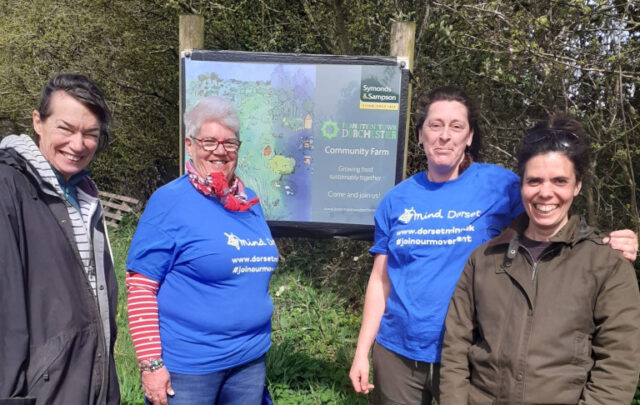… But the folks at the Panida Theater [in Idaho] wouldn’t stop clapping. The Sandpoint Transition Initiative, a new chapter of a growing, worldwide environmental movement, was officially coming to life.
The Transition movement was started four years ago by Rob Hopkins, a young British instructor of ecological design. Transition shares certain principles with environmentalism, but its vision is deeper — and more radical — than mere greenness or sustainability. “Sustainability,” Hopkins recently told me, “is about reducing the impacts of what comes out of the tailpipe of industrial society.” But that assumes our industrial society will keep running. By contrast, Hopkins said, Transition is about “building resiliency” — putting new systems in place to make a given community as self-sufficient as possible, bracing it to withstand the shocks that will come as oil grows astronomically expensive, climate change intensifies and, maybe sooner than we think, industrial society frays or collapses entirely. For a generation, the environmental movement has told us to change our lifestyles to avoid catastrophic consequences. Transition tells us those consequences are now irreversibly switching on; we need to revolutionize our lives if we want to survive.
Transition’s approach is adamantly different from that of the survivalists I heard about, scattered in the mountains around Sandpoint in bunkers stocked with gold and guns. The movement may begin from a similarly dystopian idea: that cheap oil has recklessly vaulted humanity to a peak of production and consumption, and no combination of alternative technologies can generate enough energy, or be installed fast enough, to keep us at that height before the oil is gone. (Transition dismisses Al Gore types as “techno-optimists.”) But Transition then takes an almost utopian turn. Hopkins insists that if an entire community faces this stark challenge together, it might be able to design an “elegant descent” from that peak. We can consciously plot a path into a lower-energy life — a life of walkable villages, local food and artisans and greater intimacy with the natural world — which, on balance, could actually be richer and more enjoyable than what we have now. Transition, Hopkins has written, meets our era’s threats with a spirit of “elation, rather than the guilt, anger and horror” behind most environmental activism. “Change is inevitable,” he told me, “but this is a change that could be fantastic.”
After developing the rudiments of Transition with a class he was teaching at an Irish college, Hopkins moved to the English town of Totnes, and, in 2005, began mobilizing a campaign to “relocalize” the town. The all-volunteer effort has since been busily planting nut trees, starting its own local currency and offering classes on things like darning socks in order to “facilitate the Great Reskilling.”
More than 80 other initiatives across England have followed, including one in Bristol, a city of nearly half a million people. Worldwide, there are now more than 150 official Transition Towns (communities with an active group of citizens), and last winter, trainers from Totnes traveled the globe to run workshops, leaving activists on three continents to begin the relocalization of their own communities — autonomously and with whatever financing they can raise. (The Transition revolution is, loosely speaking, a franchise model.)
… The Transition Handbook reads like an imaginative take on a corporate-management text. It recommends techniques for building consensus, from bureaucratic-sounding protocols like Open Space Technology to an exercise in which people decorate a potato like a superhero. “The Transition model,” the founder of one English Transition Town explained to me, “provides a structure, a foundation for organizing.” And along with Transition’s emphasis on hopefulness over fear, this rigorous playbook seems to set it apart from earlier grass-roots crusades.
… Transition seeks to “unleash the collective genius of a community,” as Hopkins often puts it — to unify a town behind a single, critical purpose. And at first glance, unifying Sandpoint might seem impossible. But those living on the land, whether out of a left- or right-wing ideology, do have a lot in common, including an astounding amount of resourcefulness.
… Now, maybe because our various crises have escalated, or because it costs so much to disappear into your own parcel of wilderness, opting out no longer feels like a possibility. One of Transition’s more oblique arguments may be that we can’t escape anymore. We have to work together to remake the places where we already live.
… Transition’s message is twofold: first, that a dire global emergency demands we transform our society; and second, that we might actually enjoy making those changes. Most people I met in Sandpoint seemed to have latched onto the enjoyment part and run with it.
… During the next few days, I surprised myself by actually arguing with people in Sandpoint about whether they were doing Transition properly — with enough intensity, given the stakes.
… “The genius of the Transition message, as I see it, is that it takes what we should be doing to avert these crises and turns it into something that sounds inviting and positive and uplifting,” Richard Heinberg, a Transition U.S. board member, told me in Sebastopol. Heinberg is an icon of the peak-oil fringe and the author of the seminal, comfortless book “The Party’s Over.” In 2007, he published a wider-ranging volume called “Peak Everything.” Still, Heinberg said he worries that Transition risks losing people in the elation it inspires.
… [the Sandpoint Transition Initiative was] managing to make the functioning democracy in their town a little more productive. For a wide range of not-always-consistent reasons, people in Sandpoint decided that Transition could help them build the world they wanted. And now, only because enough people stepped forward and made that decision, Transition actually looked like a good tool for the job. They were picking it up by whatever handle they grasped. They were swinging it as earnestly as they could.





